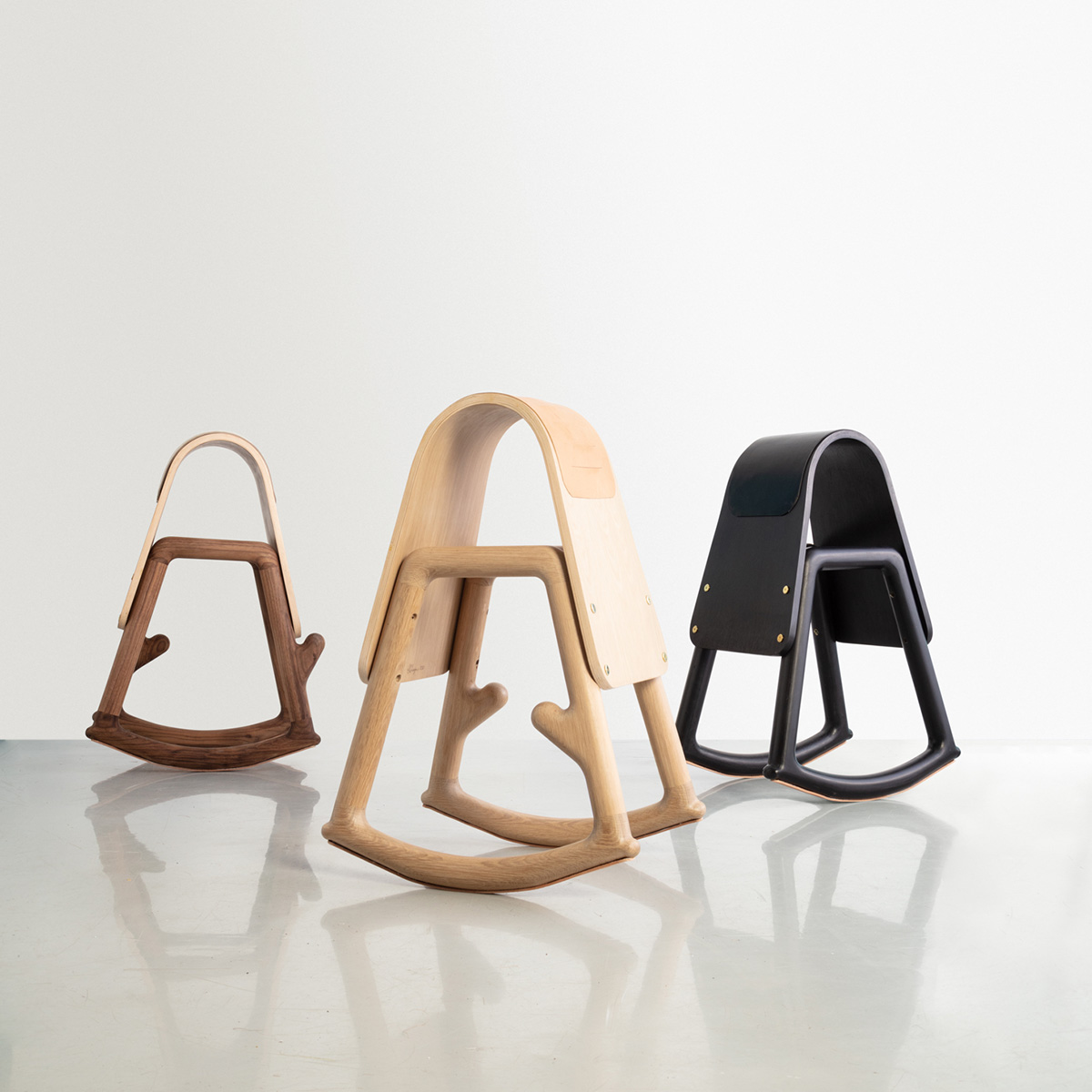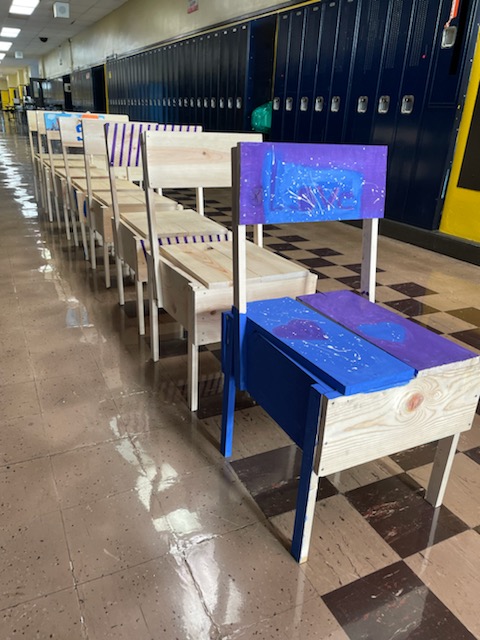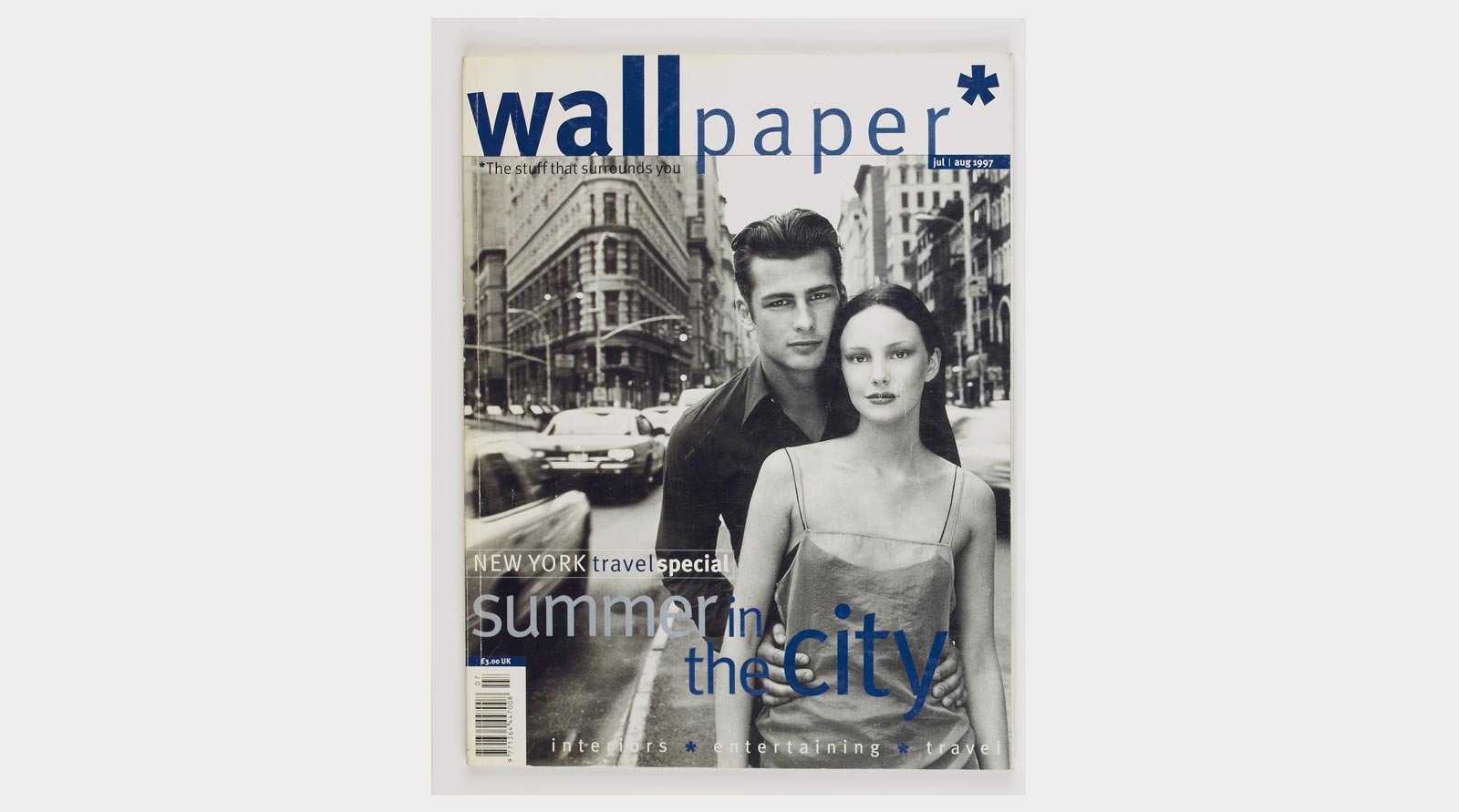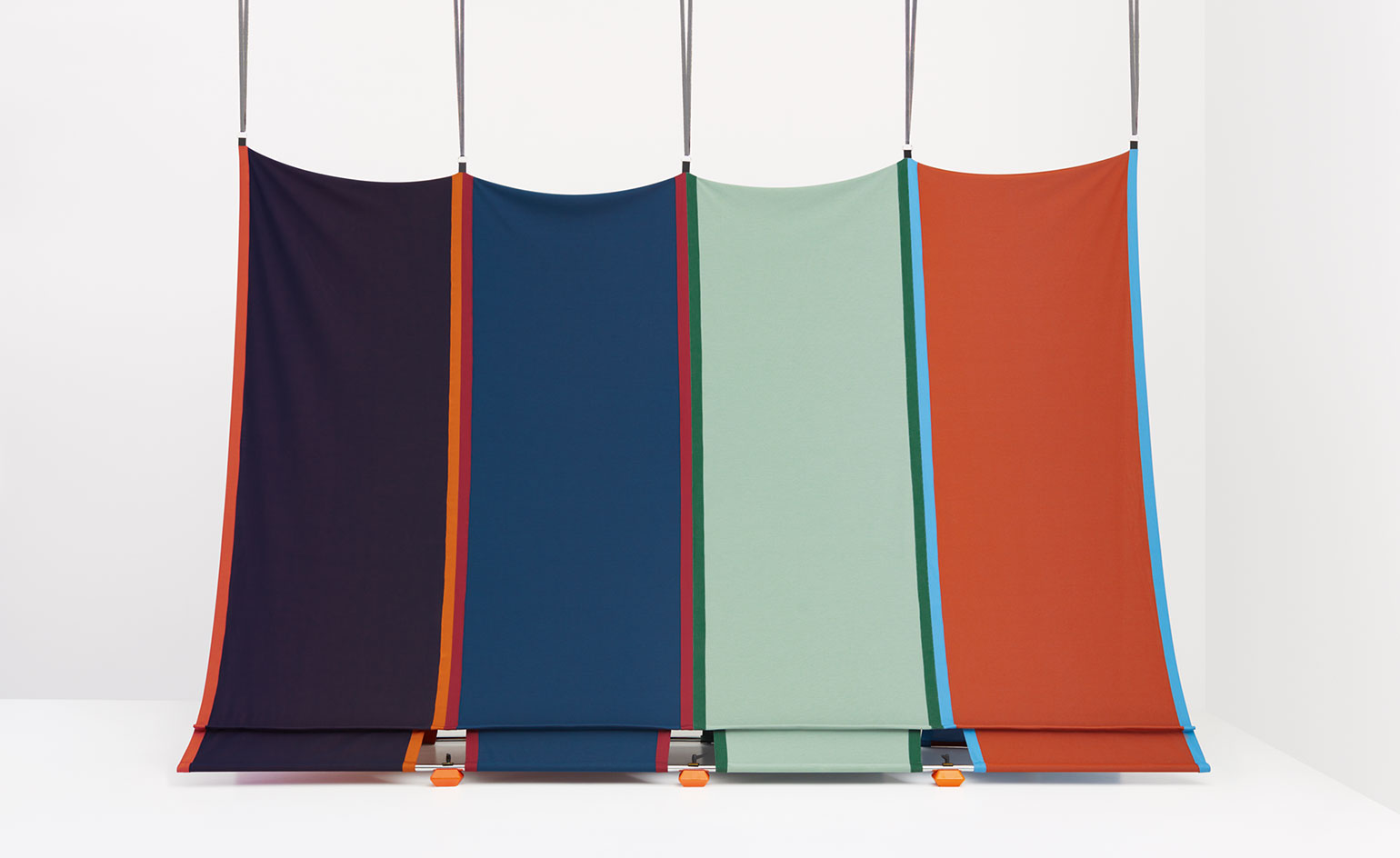Norman Teague: ‘design history needs to reinvent itself’
Chicago-based designer, maker and educator Norman Teague – named by Theaster Gates as one of his five creative leaders of the future in Wallpaper’s 25th Anniversary Issue ‘5x5’ project – on craft, connecting and community

Designer, maker and educator Norman Teague set up his design and build studio in Chicago in 2018. ‘Design should always satisfy a level of learning, human connection and interaction,’ he says when describing his practice, which focuses on connecting with local communities and specialises in spatial design, furniture fabrication, objects and custom millwork.
Norman Teague’s furniture designs

‘Sinmi’ stool. Photography: Joe Kramm, courtesy of R & Company
‘Design history needs to reinvent itself in a whole lot of ways,’ said Teague in a short film released in early 2021, coinciding with an exhibition of his furniture titled ‘From Lawn Road to South Chicago’, at New York gallery R & Company. ‘Your world is the history that you read about, and if you’re wrapping your head around the things that really say that you don’t belong here, then we have to create other books, or we have to create another world.’
The show presented Teague’s ‘Africana’ chairs and ‘Sinmi’ stool alongside historical plywood designs from Gerald Summers and Marcel Breuer. His furniture pieces, Teague explains, represent design ideals and the voices of craft from the African diaspora, often left out of the design conversation. While the chunky legs of ‘Africana’ are inspired by carved stools of the Lobi people of Burkina Faso, ‘Sinmi’ is based on Chicago city life, its rocking movement nodding to the act of chilling while leaning on a car or the backrest of a sofa. The ‘presence’ of these pieces’ forms, he explains, ‘speaks to the African diaspora, its steadfastness and resilience’.
Community-led initiatives

Back Alley Jazz (2018) in Chicago's South Shore. Photography: Marc Monaghan
Local initiatives are often more important to Teague than physical designs: ‘It’s important to me to collaborate with the “community”: youth, my neighbours, working with other craftsmen, artisans or small businesses to rise together,’ he points out. Back Alley Jazz comes to mind, a 2018 festival he curated in Chicago’s South Shore, paying tribute to the original jazz alley jams that took place in the area in the 1960s and 1970s, while involving the local community with one-day music events in the neighbourhood’s backyards.
‘Back Alley Jazz has just had its fourth annual event and has spread from one block to moving throughout the South Shore neighbourhood,’ explains Teague. ‘It really reintroduced the community to its own power; it gave them the autonomy to recreate historical community-wide events.’

Works from the design incubator at Tilden High. Photography: Norman Teague
Looking at youth in his community also inspired the Tilden Career Community Academy, an incubator programme introducing basic design fundamentals to high-school students in a predominantly African American/Latinx school district. Observing how this type of creative and manual work is not taught in schools anymore, and identifying it as a potential tool for independence and empowerment, Teague created a pathway from Tilden High School, on the South Side of Chicago, to universities that offer design programmes. ‘The future impact is a pipeline of Black design students and professionals working to influence design, urban planning and architecture across their communities,’ he notes.
In the truest sense, Brother Teague designs collaboratively, thinks strategically, and is committed to training Black and brown makers through innovative apprenticeship and guild-like studio practices
Theaster Gates
‘In the truest sense, Brother Teague designs collaboratively, thinks strategically, and is committed to training Black and brown makers through innovative apprenticeship and guild-like studio practices,’ says artist Theaster Gates, who tips Teague as one of 25 creative leaders of the future in Wallpaper’s 25th Anniversary Issue ‘5x5’ project. ‘Norman’s determination and design vocabulary continue to inspire me. I’m grateful to have this Chicago-based brother in my circle.'
Receive our daily digest of inspiration, escapism and design stories from around the world direct to your inbox.
Gates enlisted Teague as one of his collaborators for the project 12 Ballads for Huguenot House at Documenta, Kassel, in 2012. Involving a team of builders, artists and makers, including Teague, Gates took over an empty hotel building and restored it using materials from an abandoned South Side structure.
There’s no denying the potential impact of Teague’s work on a new generation of Black makers and creators. ‘The stories that sometimes coincide with my work are not just stories of my own, but a community of people sharing stories,’ he says. ‘My advice to this generation of designers would be to always consider your craft as a conversation with humans.’
INFORMATION
A version of this article appears in Wallpaper’s October 2021, 25th Anniversary Issue (W*270), on newsstands now and available to subscribers – 12 digital issues for $12/£12/€12.
Meet more creative leaders of the future nominated by artist Theaster Gates here.
Rosa Bertoli was born in Udine, Italy, and now lives in London. Since 2014, she has been the Design Editor of Wallpaper*, where she oversees design content for the print and online editions, as well as special editorial projects. Through her role at Wallpaper*, she has written extensively about all areas of design. Rosa has been speaker and moderator for various design talks and conferences including London Craft Week, Maison & Objet, The Italian Cultural Institute (London), Clippings, Zaha Hadid Design, Kartell and Frieze Art Fair. Rosa has been on judging panels for the Chart Architecture Award, the Dutch Design Awards and the DesignGuild Marks. She has written for numerous English and Italian language publications, and worked as a content and communication consultant for fashion and design brands.
-
 Terrified to get inked? This inviting Brooklyn tattoo parlour is for people who are 'a little bit nervous'
Terrified to get inked? This inviting Brooklyn tattoo parlour is for people who are 'a little bit nervous'With minty-green walls and an option to 'call mom', Tiny Zaps' Williamsburg location was designed to tame jitters
-
 Let’s hear it for the Chopard L.U.C Grand Strike chiming watch
Let’s hear it for the Chopard L.U.C Grand Strike chiming watchThe Swiss watchmaker’s most complicated timepiece to date features an innovative approach to producing a crystal-clear sound
-
 Form... and flavour? The best design-led restaurant debuts of 2025
Form... and flavour? The best design-led restaurant debuts of 2025A Wallpaper* edit of the restaurant interiors that shaped how we ate, gathered and lingered this year
-
 Michael Reynolds, Wallpaper’s US director, goes behind the scenes of the first issue
Michael Reynolds, Wallpaper’s US director, goes behind the scenes of the first issueMichael Reynolds, Wallpaper’s US director, goes behind the scenes of the magazine’s first ever cover, a shoot involving a penthouse apartment, heavy furniture – and no elevator service. Reynolds’ recollections feature in the ‘25 Years of Wallpaper*’ series, published in our October 2021, 25th anniversary issue
-
 Jinsik Kim’s explorations on the ‘modern possibilities of design’
Jinsik Kim’s explorations on the ‘modern possibilities of design’Jinsik Kim is named by Nendo as one of 25 creative leaders of the future for Wallpaper’s 25th Anniversary Issue ‘5x5’ project. His studio’s work fearlessly combine materials and forms drawing from ancient inspirations
-
 Julie Richoz’s colourful industrial design language
Julie Richoz’s colourful industrial design languageJulie Richoz is named by Nendo as one of 25 creative leaders of the future for Wallpaper’s 25th Anniversary Issue ‘5x5’ project
-
 Federica Biasi, from artisanal touch to industrial product
Federica Biasi, from artisanal touch to industrial productItalian designer Federica Biasi is named by Nendo as one of 25 creative leaders of the future for Wallpaper’s 25th Anniversary Issue ‘5x5’ project. Her work merges craft inspirations with industrial processes